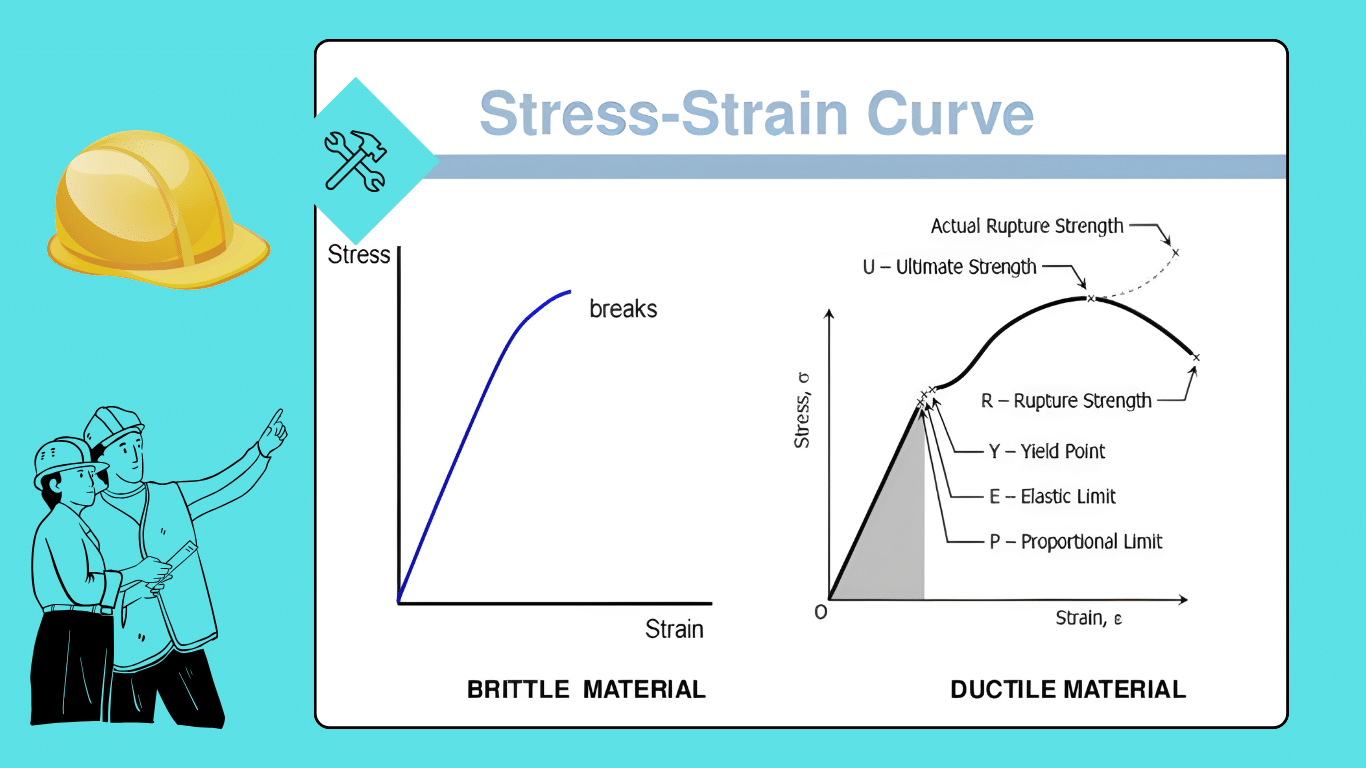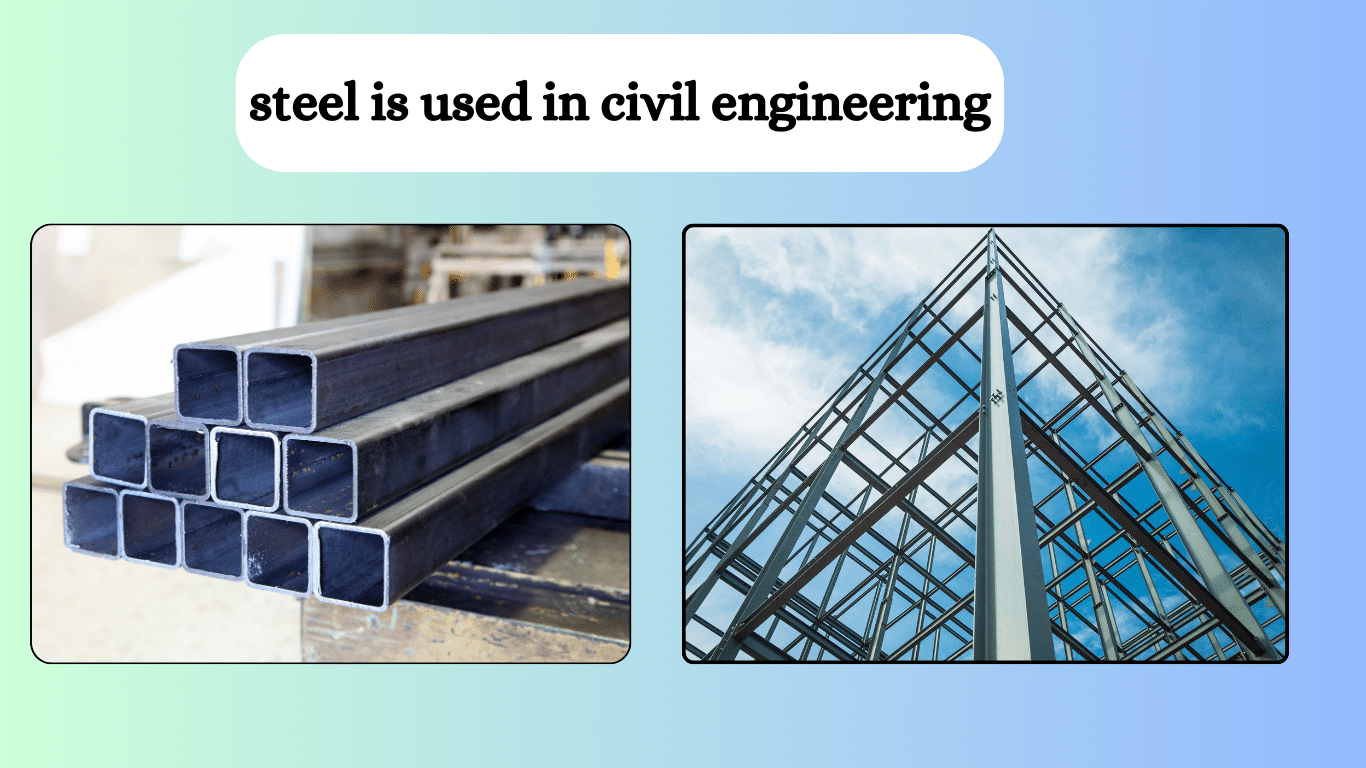The strength of materials is a Important aspect of civil engineering that deals with understanding how different materials, like concrete and steel, behave under various forces. Imagine building a bridge or a skyscraper. The strength of materials helps engineers ensure these structures can withstand the loads they’ll face, like people, vehicles, or wind. It’s like knowing the limits of your backpack; you want to make sure it won’t tear or break when you carry heavy things.
In civil engineering, we use mathematical principles to analyze and design structures that can handle the pressure and forces they encounter. So, in simpler terms, the strength of materials is like superhero training for materials, making sure they are tough enough to handle the challenges of real-world construction!
In the huge sphere of civil engineering, one fundamental aspect takes center stage: the strength of materials. This field is a cornerstone for ensuring the stability and resilience of structures, from bridges to skyscrapers. Let’s embark on a journey to understand the significance, principles, and real-world applications of Strength of Materials in the realm of civil engineering.
Knowing the Fundamentals of strength of materials in Civil Engineering
Strength of Materials deals with comprehending how various construction materials respond to external forces. The two primary materials in the limelight are concrete and steel. These materials, when subjected to loads like people, vehicles, or environmental forces, must exhibit characteristics that guarantee the integrity of the overall structure.
Real-life Comparison
Imagine constructing a bridge; it’s akin to preparing a backpack for a challenging hike. The backpack needs to endure the weight of essentials without tearing or breaking. Similarly, Strength of Materials ensures that materials used in construction are robust enough to handle the challenges posed by the real world.
Principles of Strength of Materials in Civil Engineering
- Stress and strain
- Material Properties
Stress and strain:
At the core of Strength of Materials lies the understanding of stress and strain. Stress is the force applied, while strain is the resulting deformation. Engineers analyze these factors to ensure that materials can bear the applied loads without undergoing detrimental changes.
Material Properties:
Different materials possess distinct properties. Engineers delve into the characteristics of materials like elasticity, ductility, and toughness to determine their suitability for specific applications. For instance, a material with high elasticity might be preferred for structures that need flexibility.
Real-world Applications of strength of materials in civil engineering
- Building Construction
- Bridge Engineering
- Skyscraper Stability
Building Construction:
In constructing buildings, the strength of materials is paramount. From the foundation to the roof, each component must be designed to withstand the forces it will encounter. This involves meticulous calculations and considerations to ensure the safety and durability of the structure.
Bridge Engineering:
Bridges are marvels of engineering, and their construction requires a deep understanding of the strength of materials. The materials used must endure the constant loads of traffic and environmental conditions. The design ensures that the bridge can distribute the weight effectively, preventing structural failure.
Skyscraper Stability:
The towering structures we admire in urban landscapes are made possible through meticulous strength-of-materials analysis. Tall buildings must contend with not only the force of gravity but also external forces like wind. Engineers carefully calculate and design each component to maintain stability under diverse conditions.
Challenges and Innovations in the strength of materials in civil engineering
- Environmental Impact
- Technological Advancements
Environmental Impact:
In today’s world, the environmental impact of construction is a critical concern. The strength of materials plays a role in developing sustainable solutions and exploring eco-friendly materials without compromising structural integrity.
Technological Advancements:
As technology advances, so does the field of Strength of Materials. Computer simulations and modeling tools have become invaluable, allowing engineers to simulate different scenarios and optimize designs before construction begins.
Educational Pursuits in Strength of Materials:
- Academic Importance
- Research Opportunities
Academic Importance:
For budding civil engineers, delving into the strength of materials is a crucial step. Understanding these principles lays the foundation for designing safe, efficient, and innovative structures.
Research Opportunities:
The field constantly evolves, offering numerous research opportunities. Engineers and scientists explore new materials and methodologies to enhance the strength and durability of construction materials.
Regarding the strength of materials in civil engineering, people have many questions, so here I am trying to discuss some of them. Definitely, it will help everyone a lot.
- What is the strength of a material in engineering?
- What are the types of strengths in civil engineering?
- What is the subject strength of materials in civil engineering?
- What is the unit of strength?
- What is the formula for the strength of a material?
- What is the application of the strength of materials?
- What are the basic civil engineering materials?
- What is the strength of the materials in all units?
- Which steel is used in civil engineering?
- What are the most commonly used materials in civil engineering?
Understanding Strength of Materials in Civil Engineering
Strength of Materials, also known as Mechanics of Materials, is a fundamental concept in civil engineering that deals with the study of the behavior of solid objects subjected to external forces. This branch of engineering plays a crucial role in designing and analyzing structures to ensure their safety and durability.
Types of Strength in Civil Engineering:
In civil engineering, there are various types of strength that engineers consider:
- Tensile Strength
- Compressive Strength
- Shear Strength
- Flexural Strength
Tensile Strength: This measures a material’s resistance to a force pulling it apart.
Compressive Strength: It evaluates a material’s ability to withstand a force pushing or compressing it.
Shear Strength: This is the strength against forces acting parallel to the surface of the material.
Flexural Strength: It assesses a material’s ability to resist bending.
Subject: Strength of Materials in Civil Engineering:
Strength of Materials is a dedicated subject in civil engineering curricula. It delves into the principles governing how materials respond to different types of forces. The subject equips engineers with the knowledge to design structures that can withstand the loads they might encounter during their lifespan.
Unit of Strength:
The unit of strength depends on the type of strength being measured. For example, tensile strength is typically measured in Pascals (Pa) or megapascals (MPa).
Formula for the Strength of a Material:
The formula for calculating the strength of a material varies based on the type of strength being assessed. For instance, the formula for tensile strength is the applied force divided by the cross-sectional area of the material.
Applications of the Strength of Materials:
The applications of strength in materials are diverse. Engineers use this knowledge to design buildings, bridges, dams, and other structures. It is also crucial in understand how materials perform under different conditions, helping to prevent failures and ensure the safety of structures.
Basic Civil Engineering Materials:
Basic civil engineering materials include concrete, steel, wood, and asphalt. Each material has its own set of properties that make it suitable for specific applications in construction.
Strength of Materials Units:
Units for the strength of materials can vary. For example, stress, which is a measure of strength, is measured in force per unit area (pascals or megapascals).
Steel used in civil engineering:
In civil engineering, various types of steel are used, with common examples being mild steel and high-strength steel. The choice depends on the specific requirements of the project.
Commonly Used Materials in Civil Engineering:
Apart from steel, concrete is widely used in civil engineering due to its versatility and durability. Additionally, materials like wood, asphalt, and aggregates are commonly employed based on their unique properties.
Conclusion:
In the intricate world of civil engineering, the strength of materials stands as a beacon, guiding engineers to construct structures that withstand the test of time and external forces. From the principles of stress and strain to the real-world applications in building skyscrapers, this field is not just a scientific endeavor but a practical necessity for creating a resilient and sustainable built environment. As technology progresses, the future of Strength of Materials promises even more innovations, ensuring that the structures we build today will serve generations to come.
FAQs
What is Strength of Materials in Civil Engineering?
Strength of Materials in civil engineering is a crucial field that focuses on understanding how materials like concrete and steel respond to different forces, ensuring the stability and durability of structures.
Why is Strength of Materials important in construction?
Strength of Materials is vital in construction because it ensures that materials used can handle the loads and forces they’ll face, such as people, vehicles, and environmental factors, guaranteeing the safety and longevity of structures.
Can you explain stress and strain in simple terms?
Certainly! Stress is the force applied to a material, while strain is the resulting deformation. Engineers analyze these to make sure materials can bear the applied loads without undergoing harmful changes.
How does Strength of Materials apply to building construction?
In building construction, Strength of Materials is applied to every component – from the foundation to the roof. It involves careful calculations and considerations to design structures that can withstand various forces.
Why is Strength of Materials crucial for bridges?
Strength of Materials is vital for bridges because they need to withstand constant loads from traffic and environmental conditions. Engineers ensure the materials used can distribute weight effectively to prevent structural failure.
How does Strength of Materials contribute to skyscraper stability?
For skyscrapers, Strength of Materials is essential to ensure stability under the force of gravity and external factors like wind. Engineers meticulously design each component to maintain stability in diverse conditions.
How does environmental impact factor into Strength of Materials?
With growing environmental concerns, the strength of materials plays a role in developing sustainable solutions. Engineers explore eco-friendly materials without compromising structural integrity.
How has technology influenced the strength of materials?
Technology has significantly impacted the strength of materials with tools like computer simulations and modeling, allowing engineers to simulate scenarios and optimize designs before actual construction, leading to more efficient and innovative solutions.
Why is the strength of materials important in academic pursuits for civil engineers?
Understanding the strength of materials is crucial for budding civil engineers, as it forms the foundation for designing safe, efficient, and innovative structures.
Are there ongoing research opportunities in the strength of materials?
Absolutely! The field of strength materials is continuously evolving, offering numerous research opportunities. Engineers and scientists explore new materials and methodologies to enhance the strength and durability of construction materials.




